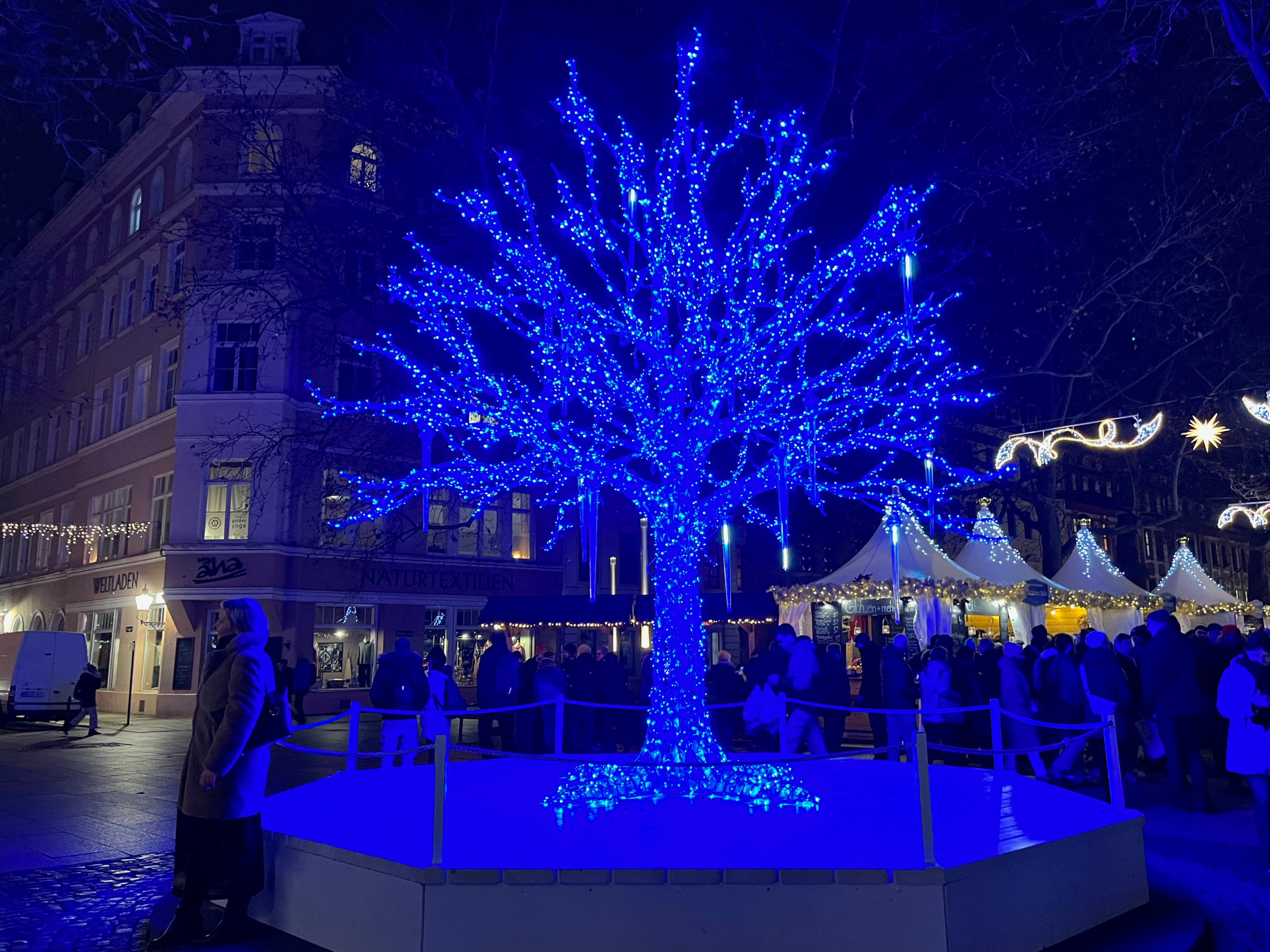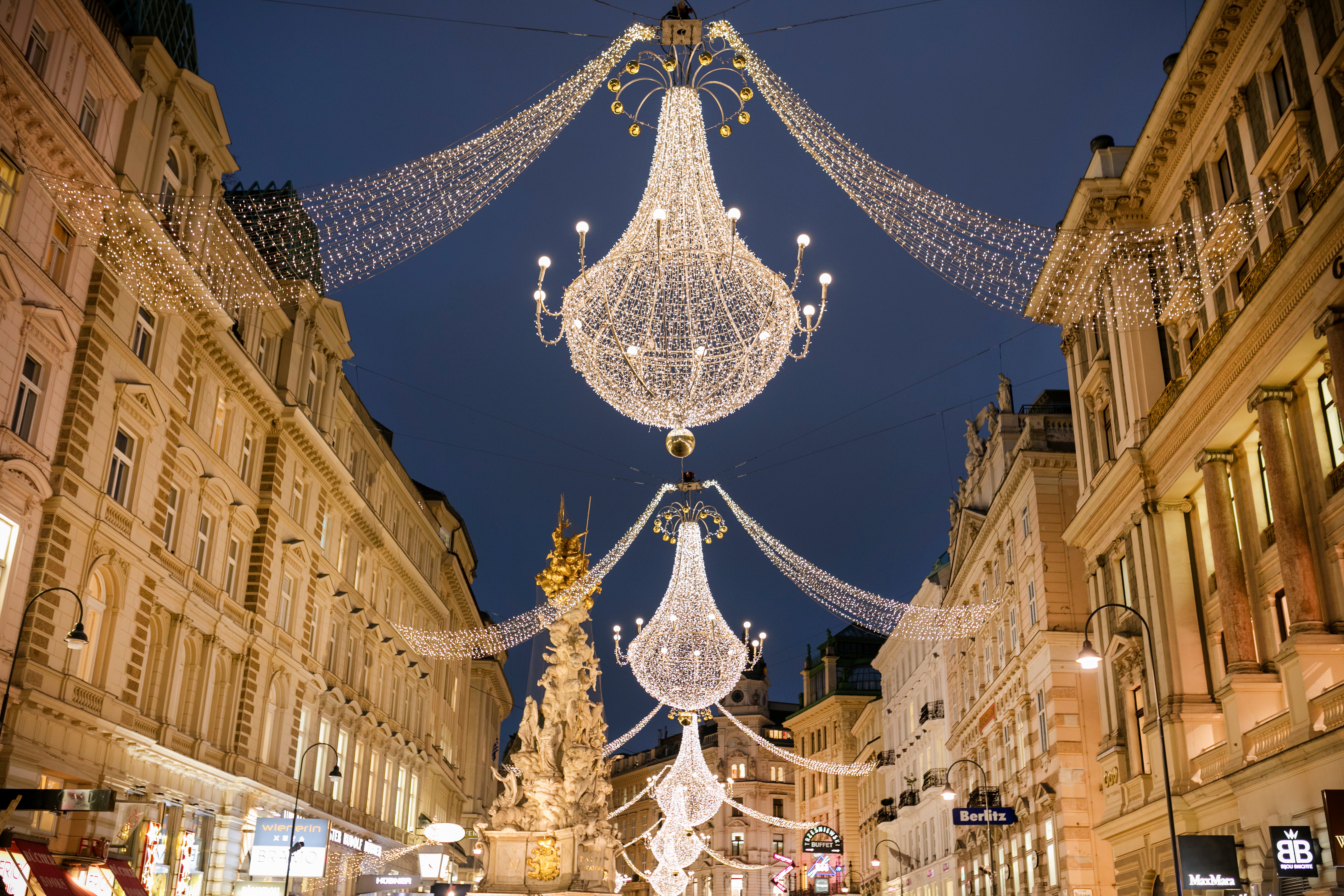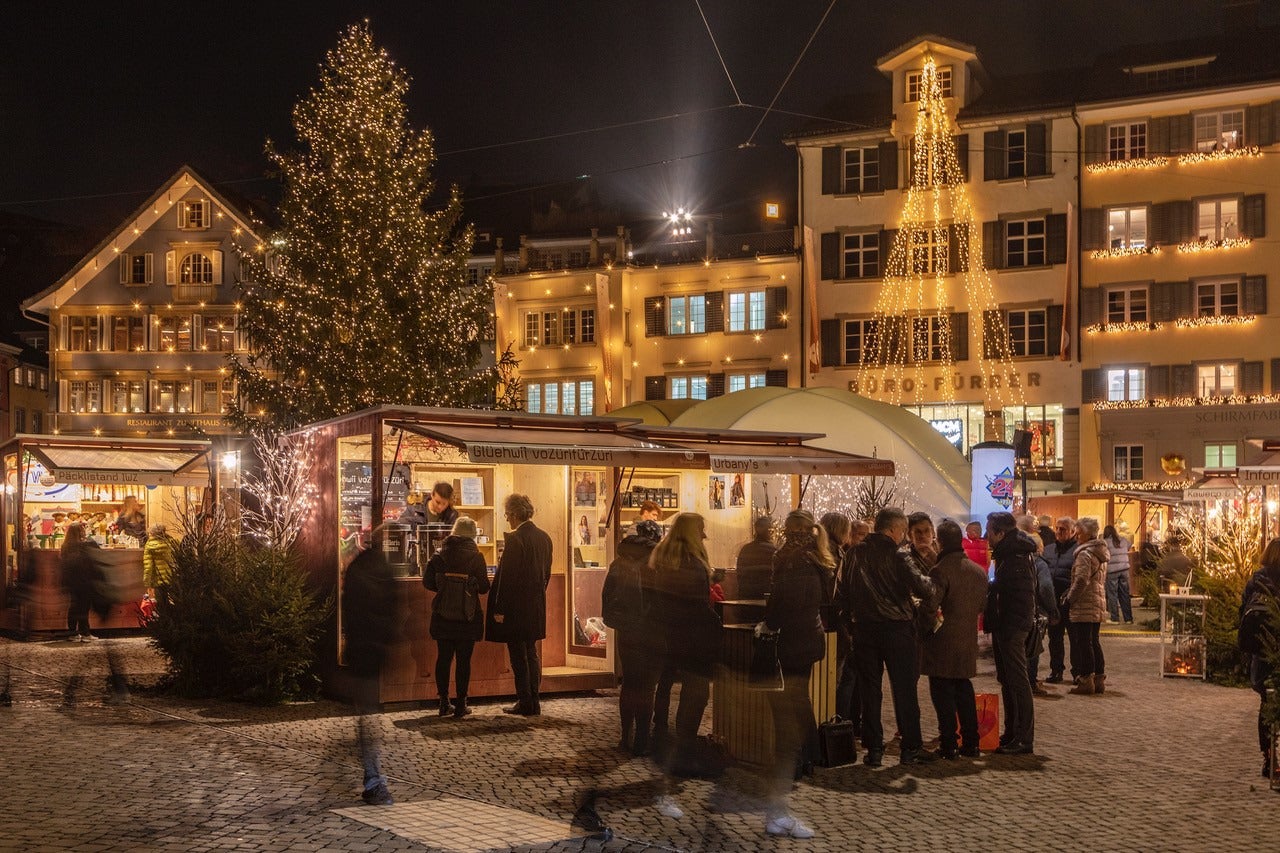
Yes, we have Christmas markets in the UK; no they are not the same thing as Europe’s.
It’s not that I don’t love rocking up to a collection of wooden stalls by a cathedral (Winchester), under a bridge (London’s Southbank), gathered around a singing moose (Birmingham) or experiencing any of the other homegrown options. I do... but the experience of a European market is something totally different and unique.
They’re much more sociable for one thing, a place for friends and families to meet up and drink gluhwein (mulled wine) – every market produces its own distinctive cup, which you can take home – with plenty of festively decorated areas for hanging out, tables to gather around and benches decked out in fur throws.
Most markets start around 11am and run until 10pm and it’s a good idea to shop in daytime when it’s easier to browse, before the night-time crowds descend. By the end of it all, you’ll think the scent of gluhwein at 11am is perfectly normal and that bratwurst and roast chestnuts are a wonderfully balanced diet.
Why travel by train?
It’s comfortable, scenic and eco-friendly and an Interrail pass makes it possible to do the journey efficiently, with train and ferry connections available for 33 countries (from £160, visit Interrail.eu). You will also need to book a seat on Eurostar to travel from the UK to mainland Europe (visit Eurostar.com), and on TGV Lyria from Switzerland (visit SNCF.com), but tickets can be cheaper when booking through the Interrail app.
There are no weight restrictions or charges for baggage on the train (useful for bringing all those gluhwein mugs home). And you arrive in the city centre with a smaller carbon footprint – one flight can generate as many emissions as 13 Eurostar journeys, according to research.
Best Christmas markets to reach by rail
Dresden

Dresden’s Striezelmarkt is the oldest Christmas market in Germany, and therefore the world, running since 1434. It’s in the Old City, a short walk from the theatres, galleries and opera, and offers a great mix of traditional Christmas buys and lots of food and drink stalls.
I enjoy it but it’s not as atmospheric as the nearby market at Frauenkirche, where the church’s mighty dome is the backdrop to a traditional Christmas market with craft displays and antiques. Afterwards, I hit the medieval market in the Royal Palace stable yard, where stallholders in medieval garb sell drinking horns and velvet jerkins alongside medieval music performances, mulled mead, blacksmiths working forges and a public hot tub.
It’s shopping as usual at the Prager Strasse market in the city’s pedestrianised shopping area, with a 15m Christmas tree and lots of stalls. For socialising, the Alpine market at Postplatz is a big favourite with after-work parties, complete with curling. As is the Augustusmarkt, over the Augustus Bridge from the Old Town, with a psychedelically colourful Ferris wheel you can see for miles.
It’s worth taking a tram for the 20-minute journey to the Elbhangfest Christmas market in the village-y suburb of Loschwitz, with its timbered houses on the banks of the Elbe. The Villa Maria is a great spot for a drink and festive snacks in the riverside garden – there are crackling wood fires and a fur-throw-covered sleigh.
How to get there by train
Take the Eurostar to Brussels and continue to Dresden via Frankfurt.
Where to stay
The Bilderberg Bellevue is next door to the Augustusmarkt and has gorgeous views across the river to the Old Town. It’s built around a courtyard with a tall Christmas tree and there’s another fine tree in the breakfast room, where you can eat cornflakes bathed in the glow of fairy lights.
From €80; bilderberg.nl
Cologne

The Three Wise Men are said to be buried in Cologne Cathedral, making the city one of the most festive places on Earth. Their bones are housed in a golden reliquary and, after visiting them, I take a turn around the big Christmas market outside, with its canopy of twinkling lights and a 25m Christmas tree. It’s big, bright and packed, and locals tend to avoid it in favour of the older and more traditional markets nearby.
Heinzels Winter Fairytale in the Altstadt is one of the city’s oldest; lively and fun with a big ice-skating circuit and curling that is so popular it gets booked up from August. It’s great for traditional buys and festive food and drink, as is the nearby Market of Angels in Neumarket, with angels beaming down from rooftops and illuminated stars in the trees.
My favourite, though, is St Nicholas Village at Rudolfplatz, where Santa and his reindeer are poised for action over the stalls.
The new Harbour market at the Severinsbrücke bridge has Rhine views and a “marine theme” (cue fish burgers). The zoo’s Christmas Garden is beautifully lit up and, while the animals are mostly tucked up for the night, you may hear the lions roar (a unique experience while visiting the ladies’ toilets, next door to their home).
How to get there by train
Travel by Eurostar direct from London to Brussels and change for Cologne.
Where to stay
The Steigenberger Hotel is perfectly placed for visiting all of the central markets and has a snazzy Christmas tree to admire from the stylish foyer bar. Located around the corner from Rudolfplatz, it’s just a 15-minute walk to the Old Town through the pedestrianised shopping streets.
From €125, B&B; steigenberger.com
Vienna

Vienna is such a stunningly beautiful city that decking it out in Christmas trees and fairy lights while choirs sing carols under centuries-old arches seems quite unfair to the rest of the world. It hosts 30 Christmas markets in total, though only 17 of these are official – the rest are smaller, local affairs (one is devoted entirely to dogs).
The biggest market is outside Vienna’s Gothic Town Hall, at the Rathusplatz - and “we don’t recommend it,” said my hotel receptionist sniffily, “it’s very touristy”. But I am a tourist and so I went, only to find that she was quite right. While it’s an impressive location, with a stunning 3,000m² ice skating trail (think rink with paths), the market itself is a bit tinselly and cheap.
Vienna’s best markets are 18th-century old-school and located just a few streets away at Freyung (with Austria’s longest Nativity scene) and Am Hof. Good for festive handicrafts and vintage finds, it has a stage where musicians and singers perform (all a cappella, there’s nothing so crass as an amp here).
In-the-know visitors join locals at the very hip Spittelberg Market (a popular spot for first dates), which winds its way through cobbled streets. The Christmas Village at Maria-Theresien-Platz has glorious backdrops of the Natural History and Kunsthistorisches Museums, and other famous settings include the Belvedere Palace market – pop inside to see the Klimt collections – and the Hofburg Palace with its distinctive white stalls.
There’s a busy market outside St Stephen’s Cathedral; queue to see its soaring interiors afterwards. Art Advent at Karlsplatz is another must-see – less Christmassy, more designer homewares, artwork and textiles.
How to get there by train
Travel by Eurostar to Brussels and then to Vienna via Frankfurt.
Where to stay
Hotel Motto is a chic boutique choice, right beside the metro or a 20-minute walk to the central markets. It’s a classic Viennese hideaway with a Parisienne twist; the rooms have a boudoir feel and your Christmas jumper may look out of place in the elegant foyer.
From €180; hotelmotto.at
Zurich

It may not have the same reputation for Christmas markets as some other European cities, but Zurich does Christmas with a joyful zeal. And it’s the home of Lindt, where you can partake of a chocolate tour, participate in chocolate workshops and, of course, eat lots of chocolate.
The big market in front of the Opera House has the usual gifts and decorations but it’s the food and drink stalls that make it so popular with locals – it turns into party central after dark. There are stalls dotted throughout the Old Town and the main shopping streets, the biggest indoor Christmas market in Europe is at Zurich Central Station, with a pedal-powered Christmas tree.
The Münsterhof market at the iconic Fraumünster church near the riverbank has handmade designer buys, plus you can browse stylish Christmas gifts in Zurich West, the city’s cultural quarter, which has a small Christmas market at Frau Gerold’s Garden.
Santa is big in Zurich. There’s a Samichlaus parade on the first Sunday of Advent, when dozens of Santas parade down the Bahnhofstrasse, and a Santa Claus swim – Samichlausschwimmen – at the start of December, where 300 people in Santa Claus costumes swim across the Limmat river to raise money for charity.
You’ll see Santa driving the Märlitram, taking children aged four to 10 on a 25-minute magical journey around the city streets, entertained by storytelling angels – no adults allowed! And if you’re lucky (and have been good), you might catch glimpses of him around town on 6 December, St Nicholas Day.
The Singing Christmas Tree off the Bahnhofstrasse is great fun, a podium-shaped tree where carollers perform concerts several times a day, alongside stalls selling gluhwein. Wooden cabins serving fondue pop up all over the city in December and the cable cars on the rooftop terrace at Bernadette restaurant are another festive option, surrounded by twinkling Christmas trees, overlooking the Opera House market. Or join the locals at Café 1841 for the most Christmassy hot chocolate in town.
How to get there by train
Take the Eurostar to Paris Nord and then catch a direct train to Zurich from Paris Gare de Lyon.
Where to stay
Push the boat out and enjoy five-star luxury at Hotel Baur au Lac, walking distance from the Christmas markets and across the road from the Opera House. This former lakeside villa has been family owned for seven generations, has hosted royalty and celebrities, and its gorgeous garden sports a fondue chalet and the tallest Christmas tree in Zurich.
Rooms from €700 a night; bauraulac.ch
Also very festive and rather plush is the riverside Storchen Hotel, a member of the Preferred Hotels and Resorts group and a great Christmassy treat. The restaurant terrace overlooks the Limmat river and the soaring Romanesque towers of the 12th century Grossmünster on the opposite bank, swans may bob outside bedroom windows.
Rooms from €400 a night; storchen.ch







